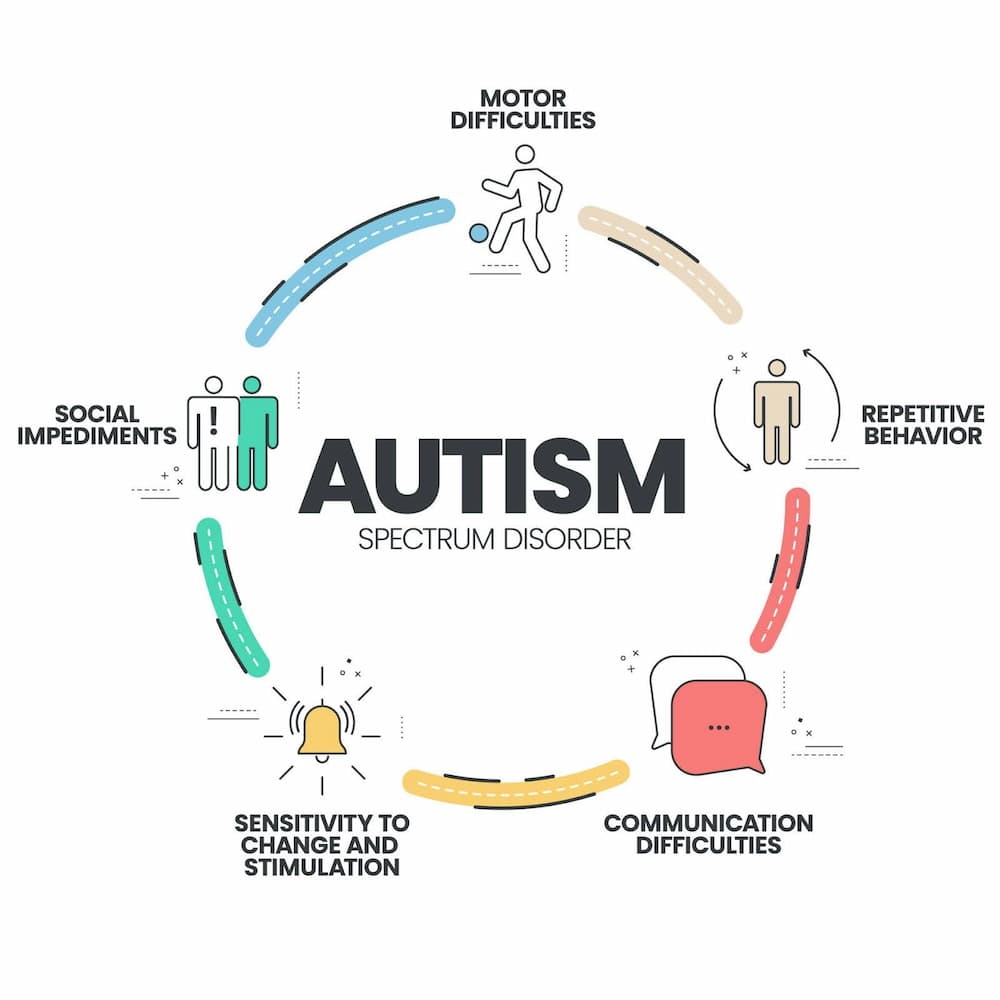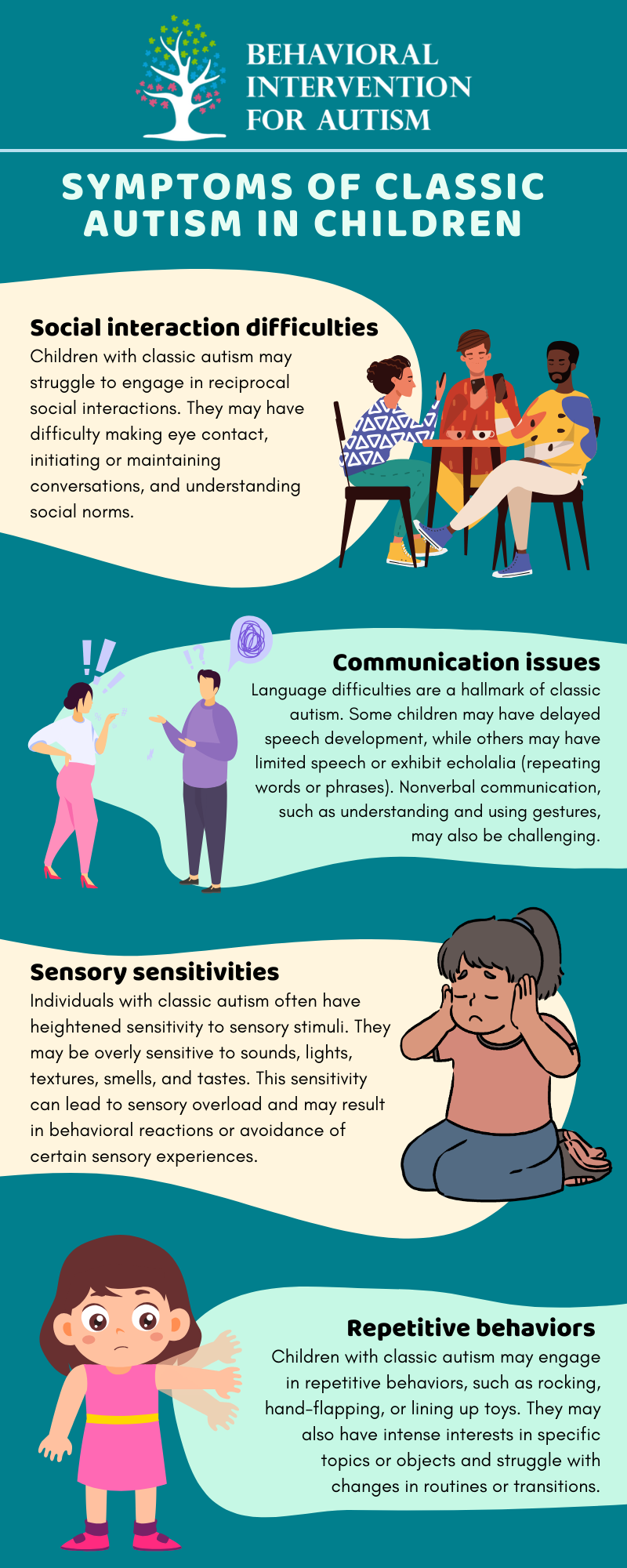Recognizing emotional signals through Autism Therapist-backed methods
Recognizing emotional signals through Autism Therapist-backed methods
Blog Article
Recognizing the Effect of Behavioral Autism on Life and Social Interactions
You could not understand how deeply behavioral autism impacts day-to-day life and social interactions. People on the range typically navigate a globe filled with communication difficulties and sensory overload. These difficulties can lead to irritation and isolation, affecting their relationships and overall health.
Defining Behavioral Autism and Its Features
Behavioral autism, usually referred to as autism spectrum disorder (ASD), incorporates a series of problems identified by challenges in social communication, communication, and recurring habits. You may discover that people with ASD frequently have a hard time to analyze social hints, which can cause misunderstandings in discussions. They might find it difficult to develop eye contact or take part in small talk, making social circumstances really feel frustrating.
Communication troubles can manifest in various methods, from delayed speech advancement to a preference for using less words. Repetitive habits, such as hand-flapping or rocking, can act as coping systems to handle stress and anxiety or sensory overload. These attributes can profoundly affect day-to-day live, making it important for you to understand and sustain those with ASD. By acknowledging these traits, you can foster an atmosphere that promotes acceptance and urges effective interaction, aiding people with autism flourish in their everyday interactions.
The Spectrum of Autism: Understanding Irregularity in Habits
Autism range disorder (ASD) isn't a one-size-fits-all diagnosis; it varies commonly among people. You could observe that some people with ASD exhibit moderate symptoms, while others might encounter a lot more significant difficulties. This variability can materialize in habits, passions, and sensory level of sensitivities. You may experience individuals that are very verbal and engage easily in discussions, while others may favor singular tasks or connect non-verbally.
Furthermore, the way individuals with ASD respond to sensory input can differ substantially; some may be overwhelmed by loud sounds or intense lights, whereas others thrive in promoting settings. The spectrum also includes differences in social interactions; some people may struggle to translate social hints, while others navigate social setups with family member simplicity. Understanding this variability is necessary, as it helps you value each person's special experience and dressmaker assistance to their particular needs, fostering a more inclusive atmosphere for everybody.
Communication Obstacles Faced by People With Autism
When you connect with individuals on the autism range, you might notice their special communication difficulties. They typically encounter difficulties with both verbal and nonverbal cues, which can affect their social communications. Recognizing these barriers is crucial for promoting far better connections and assistance.

Verbal Interaction Troubles
Several individuals on the autism range experience spoken interaction difficulties that can considerably influence their daily communications. You might discover it testing to express your ideas, feelings, or requires clearly. This can bring about disappointment for both you and those around you, as misunderstandings occur. You may deal with initiating conversations, keeping a subject, or comprehending subtleties in speech. Often, you may like making use of easy language or repeated phrases, which can limit your ability to take part in deeper conversations. Your rate, tone, or volume may not line up with social assumptions, causing others to misinterpret your purposes. Identifying these challenges can aid you and your assistance network develop approaches to improve communication and promote much better connections with others in your everyday life.
Nonverbal Interaction Barriers
Verbal interaction isn't the only challenge people on the autism spectrum face; nonverbal interaction barriers can be equally as considerable. You might find it hard to translate body language, face expressions, and eye contact, which are essential for effective interaction. These difficulties can bring about misconceptions or misinterpretations of social signs, making interactions really feel overwhelming or complex. You may battle to express your very own feelings with nonverbal means, leaving others uncertain of your objectives or sensations. This detach can develop feelings of isolation and aggravation. Identifying these barriers is vital for fostering understanding and empathy in your communications. By dealing with nonverbal interaction, you can locate techniques to boost your social experiences and enhance your general high quality of life.
Social Communication Effects
Social communications can often feel frustrating because of the special interaction obstacles encountered by people with autism. You could deal with interpreting social cues, making it hard to understand sarcasm or body movement. This can bring about misconceptions or unpleasant minutes in conversations. Additionally, initiating and maintaining discussions might really feel tough, creating anxiousness in social circumstances. You might favor organized atmospheres, making spontaneous interactions unpleasant. It's also usual advice to experience trouble in involving in tiny talk, which can impede developing new friendships. Identifying these challenges can aid you locate strategies to boost interaction, such as practicing social skills in safe setups or utilizing visual help - Autism Therapist. Recognizing your demands enables you to navigate social communications with better self-confidence and convenience.
Social Interaction and Partnership Structure in Autism
While structure relationships can be challenging for people with autism, understanding their special perspectives and interaction designs can foster significant links. You could discover that lots of individuals on the spectrum favor direct communication and might have problem with social signs or little talk. By being straightforward in your communications, you can help produce a setting where they really feel comfortable.
Put in the time to observe and pay attention just how they express themselves. This understanding can direct you in guiding conversations much more efficiently. Participating in shared rate of interests can additionally serve as a bridge to deeper links. Whether it's a leisure activity, a favorite show, or a common enthusiasm, these common threads can open doors to friendship.
Life Routine: Browsing Techniques and difficulties
Navigating everyday life regimens can be especially testing for people with autism, specifically when unanticipated changes occur. You could discover comfort in having an organized schedule, as it assists you expect what's next. When interruptions take place, it's regular to feel overloaded or anxious. To browse these obstacles, take into consideration carrying out aesthetic routines or checklists. These tools can give clarity and reassurance.
Developing a regimen that includes sensory breaks can likewise be valuable. You can intend time-outs throughout your day to reenergize. It's necessary look what i found to connect with those around you, letting them recognize your demands and preferences. This helps produce an understanding environment.
Finally, method mindfulness strategies to handle tension and stress and anxiety. Simple breathing exercises or basing techniques can make a substantial difference. By including these techniques, you can enhance your day-to-day routine and decrease disturbances, making life feel a lot more workable.
Staminas and Capacities of People on the Autism Spectrum
Comprehending day-to-day life regimens is simply one facet of the autism experience. Numerous people on the autism range possess remarkable toughness and capabilities that establish them apart. You might discover that your focus to information is remarkable, permitting you to excel in jobs that need precision and emphasis. Your ability to believe outside the box can lead to cutting-edge options in different circumstances.
Furthermore, your memory abilities frequently radiate, particularly in locations of rate of interest. Autism Therapist. This knack for maintaining information can make you a useful source in areas like modern technology, scientific research, or art. You may likewise display solid visual reasoning, enabling you to visualize intricate concepts and solve problems creatively
In addition, your one-of-a-kind perspective on the world can foster compassion and understanding in others, enhancing social interactions. Embracing these toughness not just enhances your self-confidence but also helps others appreciate the varied talents you offer the table.
Producing Inclusive Atmospheres for Individuals With Autism
Creating comprehensive environments for individuals with autism starts with making sensory-friendly areas that accommodate their one-of-a-kind requirements. You can also cultivate chances for social interaction, aiding to build links and friendships. By making these modifications, you'll contribute to an extra inviting environment for everyone.
Designing Sensory-Friendly Spaces
While making sensory-friendly spaces, it's important to reflect on the distinct requirements of people with autism. Incorporate peaceful zones where individuals can retreat official website and recharge when overwhelmed. Consist of visual schedules or clear signs to assist individuals browse the room with confidence.
Promoting Social Interaction Opportunities
Creating sensory-friendly areas not only addresses specific convenience however also establishes the stage for significant social interactions among people with autism. To promote these interactions, develop inclusive environments that welcome involvement. Organize organized activities, like art classes or team video games, that urge cooperation without overwhelming sensory input. Usage visual aids and clear interaction to help every person engage conveniently. Urge peer mentoring, pairing individuals with autism with helpful peers that can assist them via social circumstances. In addition, think about holding normal area occasions that commemorate neurodiversity, promoting acceptance and understanding among all individuals. By implementing these techniques, you can enhance social possibilities, assisting people with autism build friendships and strengthen their social abilities in a secure, welcoming environment.

Often Asked Inquiries
How Can Buddies Assistance Someone With Behavioral Autism?
You can support a friend with behavior autism by holding your horses, paying attention proactively, and appreciating their boundaries. Participate in activities they take pleasure in, communicate freely, and develop a comfy setting where they feel valued and understood.
What Resources Are Available for Parents of Children With Autism?
You can discover numerous resources for parents of youngsters with autism, consisting of support groups, educational internet sites, and neighborhood neighborhood solutions. Getting in touch with other parents can additionally supply beneficial insights and shared experiences to assist navigate obstacles.
Can Behavioral Autism Adjustment In Time?

Yes, behavioral autism can transform in time. You could discover changes in communication, social skills, and habits as your child expands. Early treatment and support often play crucial roles in these developing changes.
How Do Sensory Sensitivities Affect Life?
Sensory level of sensitivities can make day-to-day experiences overwhelming. You may battle with loud noises or intense lights, leading to stress and anxiety or evasion. Finding settings that suit your needs can considerably boost your comfort and general life.
What Are Usual Misconceptions Concerning Behavioral Autism?
You might assume behavioral autism just affects communication skills, however it's more complicated. Many assume individuals lack empathy or intelligence, which isn't true. Comprehending these mistaken beliefs aids foster acceptance and assistance for those on the spectrum.
Behavioral autism, typically referred to as autism range disorder (ASD), includes a range of problems defined by difficulties in social interaction, communication, and repeated actions.Social communications can commonly really feel overwhelming due to the special interaction difficulties dealt with by individuals with autism.Creating sensory-friendly spaces not just addresses private convenience however additionally establishes the phase for purposeful social communications amongst people with autism. Motivate peer mentoring, coupling individuals with autism with supportive peers who can direct them with social scenarios. By implementing these strategies, you can boost social possibilities, assisting individuals with autism construct friendships and strengthen their social abilities in a secure, inviting setting.
Report this page